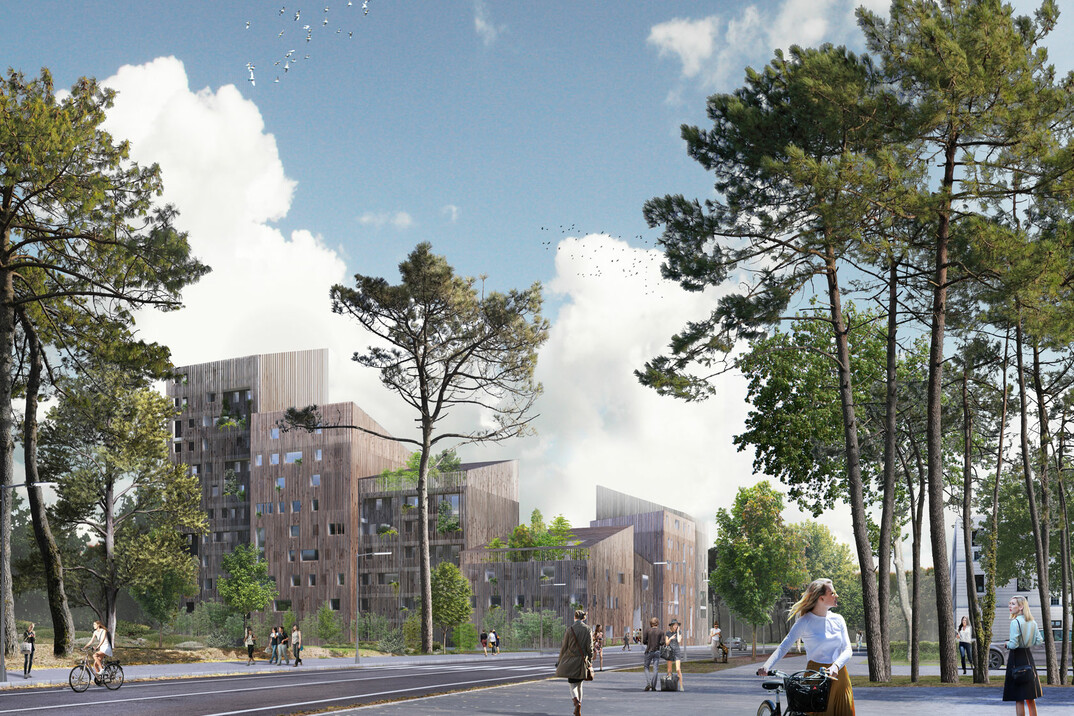Scenography - Bluebeards Castle - Saito Kinen Festival
Bluebeard’s Castle is an opera whose libretto was completed in 1910 by Béla Balázs, with the score composed in 1911 by Béla Bartók. Musically, it has a mysterious atmosphere and a dissonance that gives a brooding sense of darkness. The plot follows the story of Judith and Bluebeard, who arrive to the latter’s castle when it is dark. The castle has seven locked doors around the perimeter wall, which Judith insists on opening to allow light in. However, Bluebeard refuses and asks her to love him without question and questioning. Judith persists and opens the doors one after the other. From each a beam of colored light symbolically escapes, and when she finally opens the seventh door, she is held prisoner, along with Bluebeard’s other three wives. As the door slams behind her, Bluebeard is alone as all fades to darkness.
Working from this narrative, the scenography concept is underpinned by an internal landscape of eight walls that create seven openings, representing the doors. A perimeter wall divides inside and outside on the stage, and on these surfaces are created illusions, projections, reflections, transparencies and shadows of Bluebeard and Judith, through the play of light. The multilayered wall construction, in a V shape of 2.7 x 2.7 x 6.3m high, weights more than 500kg, and can be moved with a pressure of 10kgN/point. The pivoting walls can form numerous geometric compositions, creating a particular atmosphere for each scene.
[…] [×]Copyrights
Photos © Kishin Shinoyama
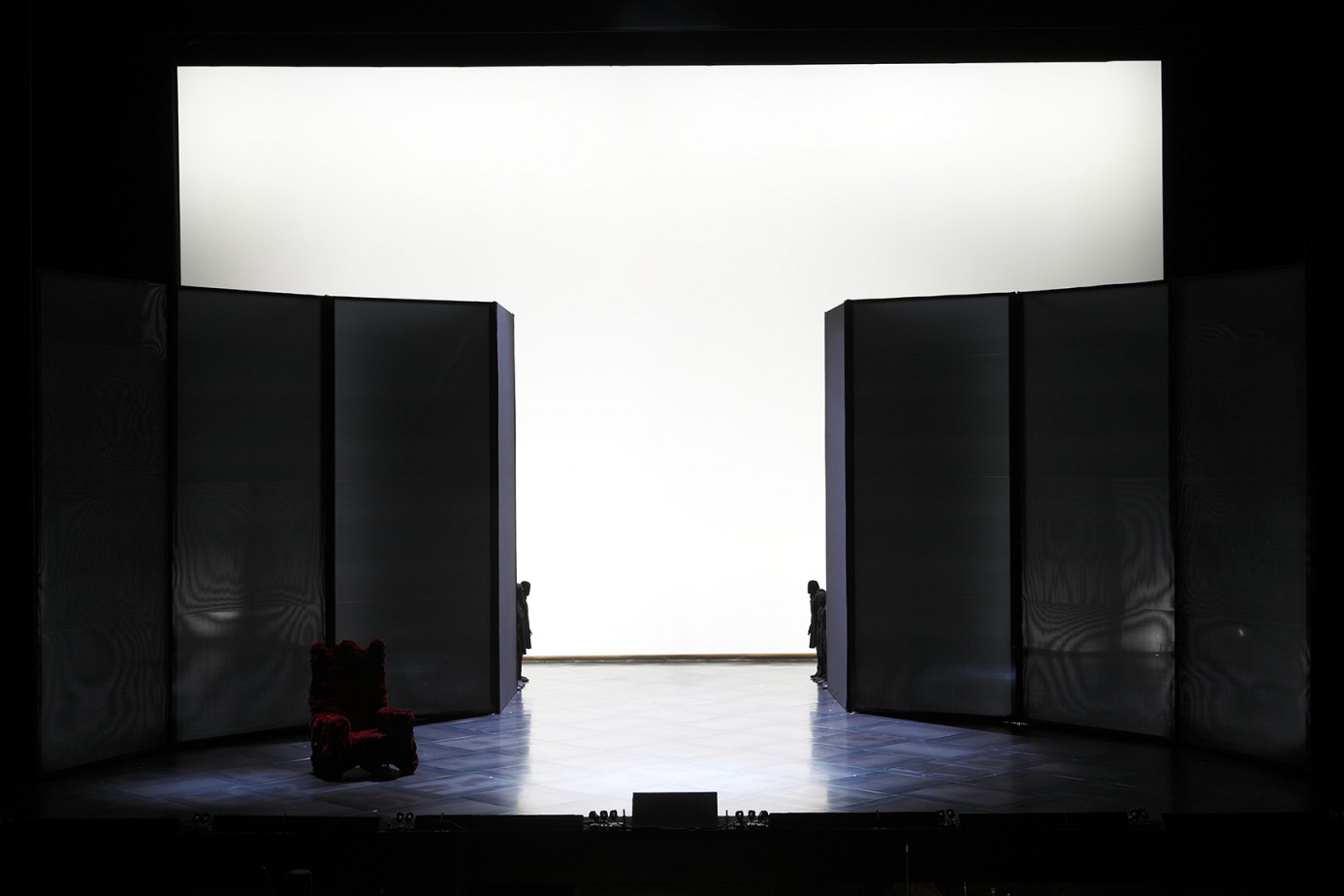
© Kishin Shinoyama

© Kishin Shinoyama

© Kishin Shinoyama
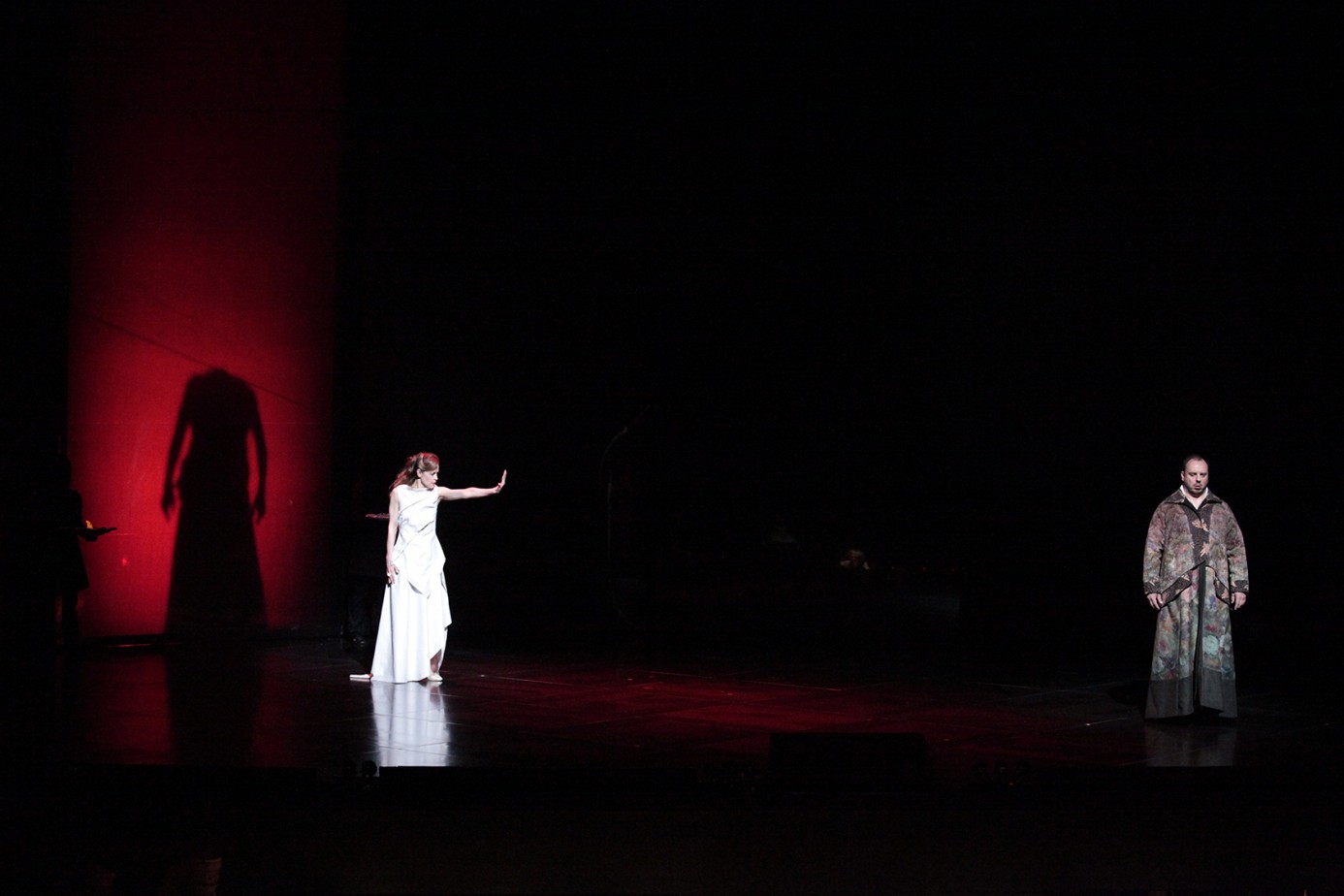
© Kishin Shinoyama
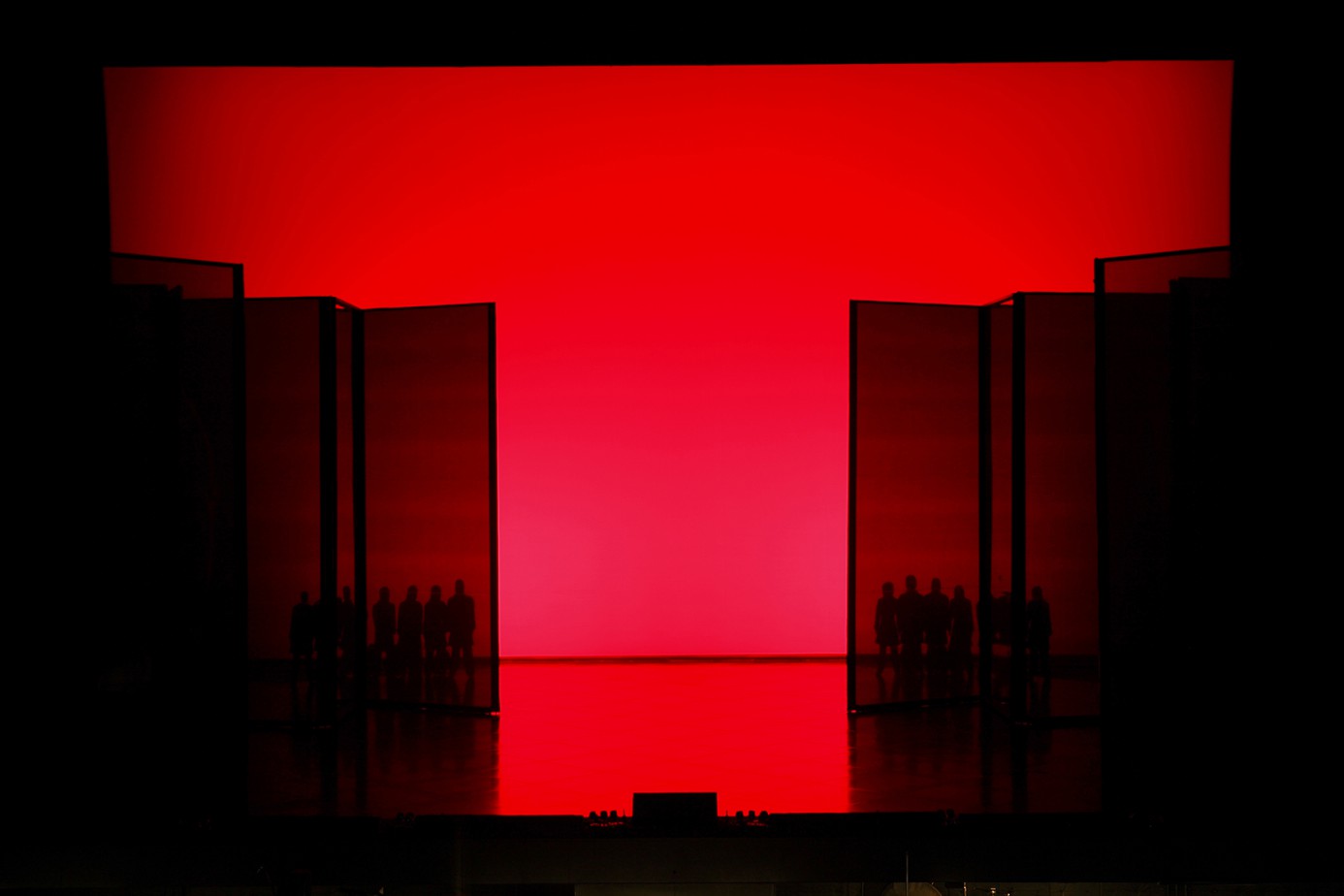
© Kishin Shinoyama
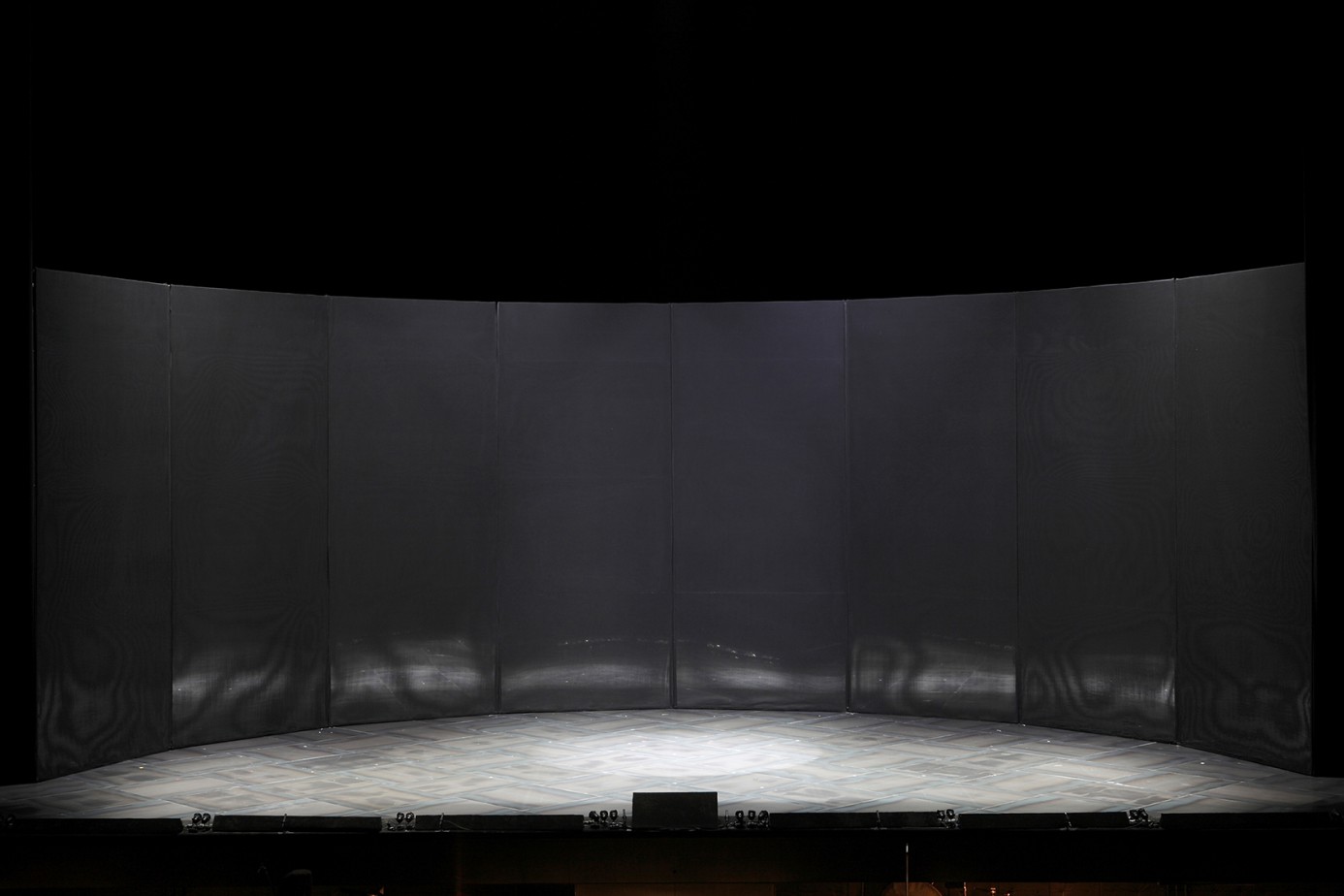
© Kishin Shinoyama

© Kishin Shinoyama
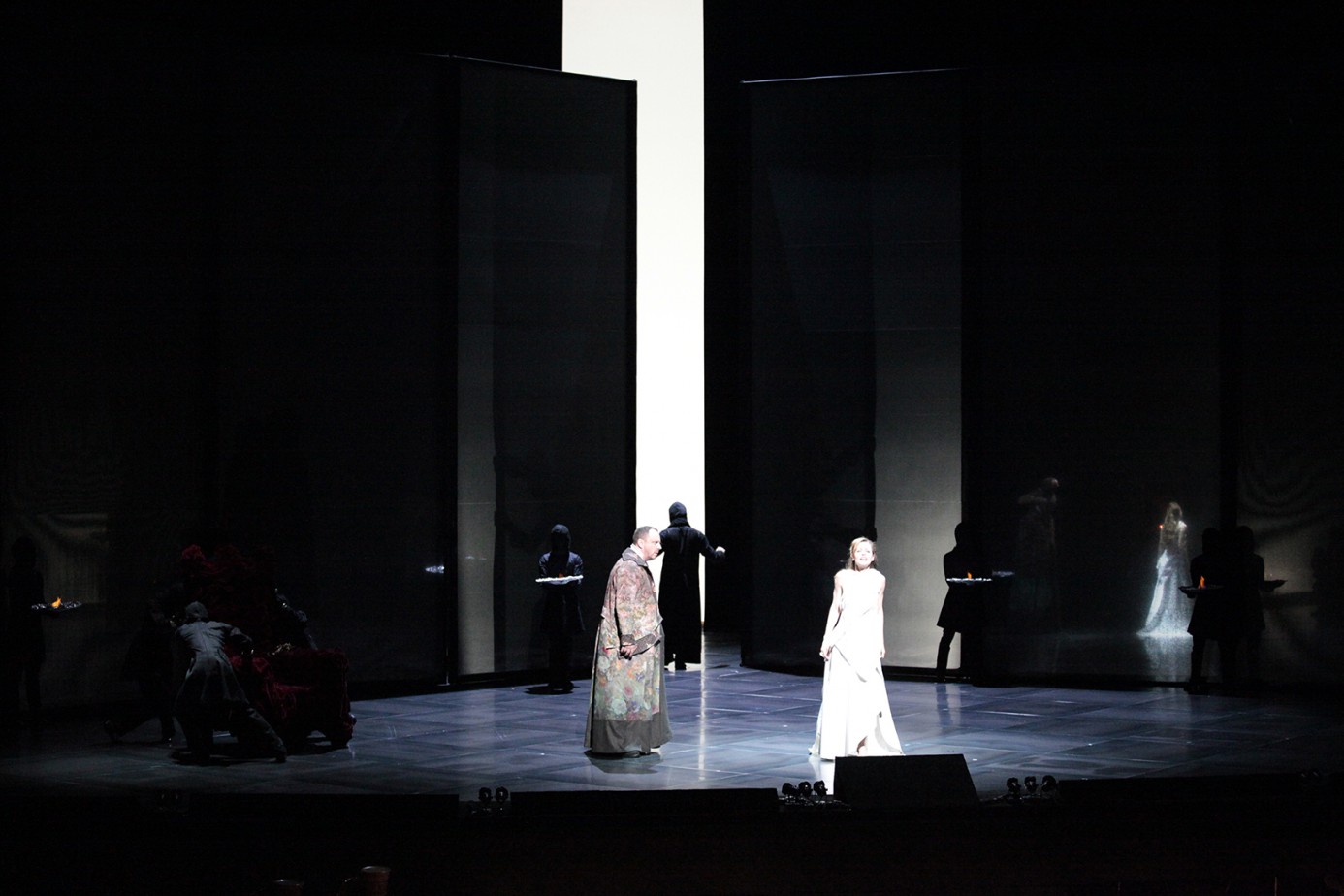
© Kishin Shinoyama
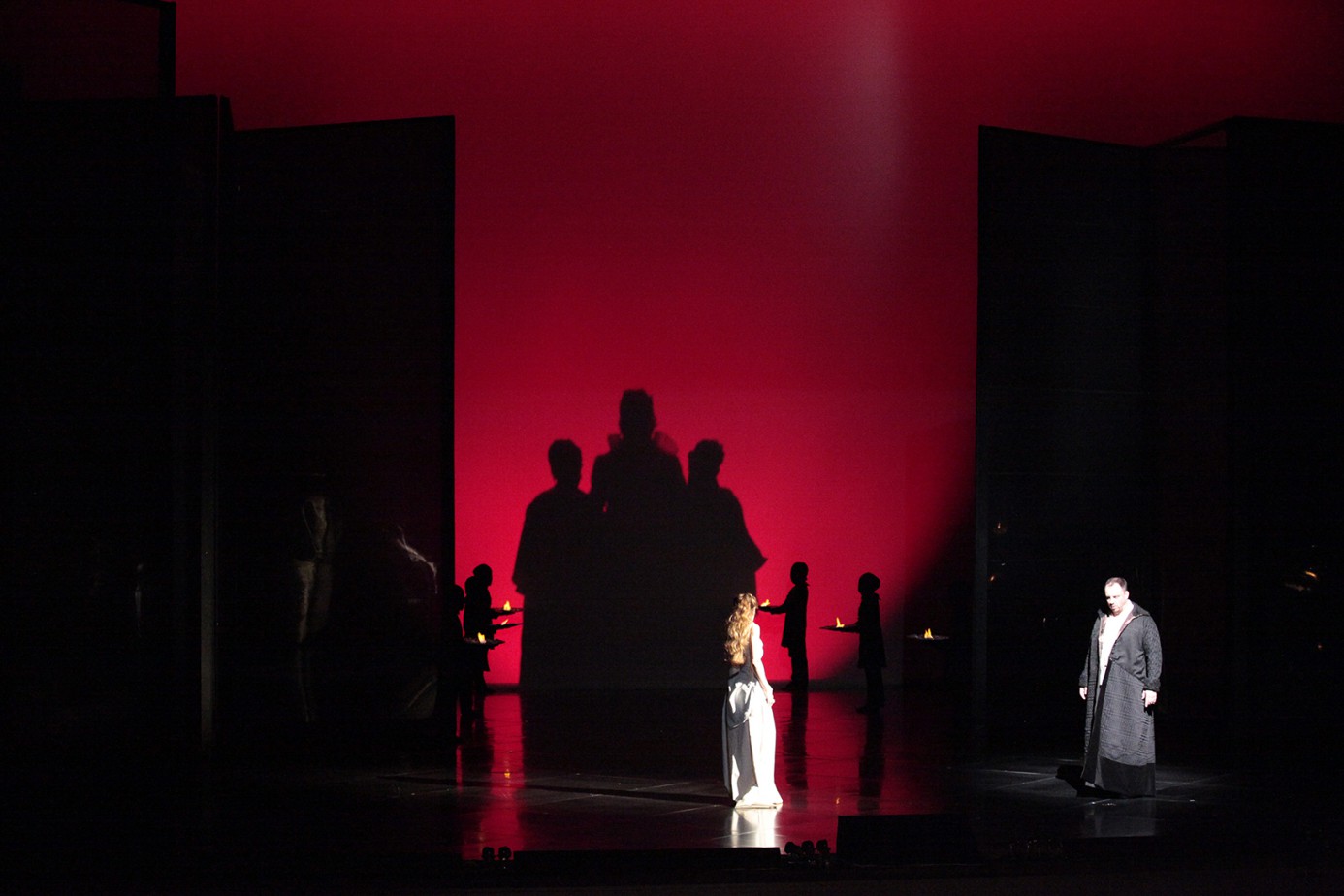
© Kishin Shinoyama


